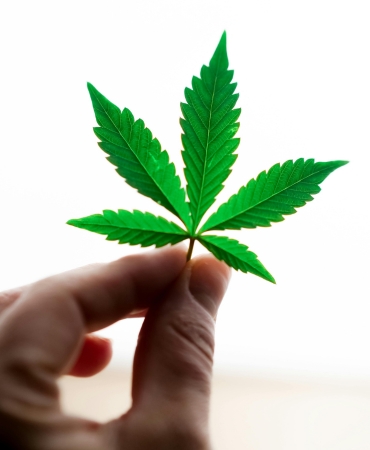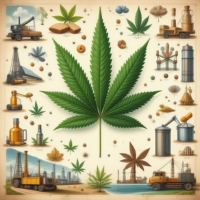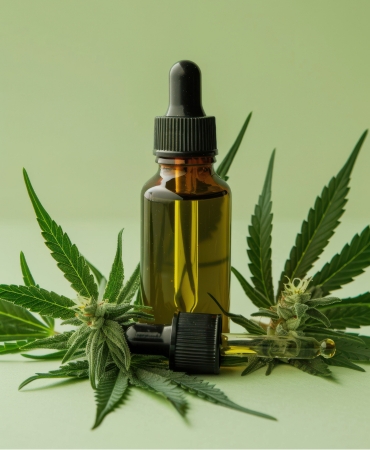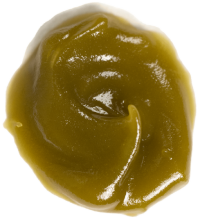

Did you know that industrial hemp is one of the oldest cultivated crops, dating back over 10,000 years? Today, it’s not just an ancient relic; it’s a modern-day powerhouse that’s reshaping industries worldwide.
From eco-friendly textiles to sustainable construction and even high-protein superfoods, hemp is making waves.
But here’s the kicker: The global hemp market is expected to hit $18.6 billion by 2027 (Source: Grand View Research). Why? Because this plant isn’t just versatile—it’s a sustainable solution for industries drowning in environmental concerns.
So, what exactly is hemp, and why is everyone talking about it? This guide breaks it all down for you—no fluff, just facts. Whether you're curious about hemp fibers, CBD products, or its role in medicine, you’re in the right place.
Hemp: Meaning and Origins
Hemp is a plant that has been used for thousands of years. It belongs to the Cannabis sativa species but is not the same species as marijuana. Unlike marijuana, industrial hemp has very low levels of THC content, which means it does not have psychoactive effects.
Hemp is a versatile plant with many uses. Its seeds, stalks, and leaves are used in industries like textiles, food, construction, and medicine.
Hemp fibers make durable fabrics, while hemp seed oil and hemp products are popular in skincare and nutrition. Many people also use CBD products from hemp for medical purposes.
The History of Industrial Hemp and Its Global Impact
Hemp has been cultivated for over 10,000 years. Ancient civilizations in China and Mesopotamia used it to make ropes, textiles, and paper. By the 1600s, farmers in North America were required to grow hemp because of its importance in agriculture and trade.
During World War II, the U.S. government encouraged farmers to grow hemp for the war effort. It was used to make hemp ropes, parachutes, and uniforms. However, in the 20th century, hemp farming declined due to federal law restricting its production, linking it to cannabis plants.
In 2018, the Agriculture Improvement Act legalized hemp cultivation again. Since then, the hemp industry has grown rapidly. Today, hemp is a major player in sustainable agriculture, offering building materials, dietary supplements, and hemp seed protein as a rich protein source.
With its low production costs and eco-friendly benefits, hemp is shaping the future of food, textiles, and medicine. Experts predict that by 2027, the global hemp market will reach $18.6 billion (Source: Grand View Research).
Hemp is back—and it’s here to stay! 🌱
The Difference Between Cannabis Sativa and Cannabis Indica
The genus cannabis includes three main species: Cannabis sativa, Cannabis indica, and Cannabis ruderalis. The cannabis species vary in THC content, which determines their legal status and usage. C sativa is commonly known as cannabis sativa and includes both hemp and marijuana varieties.
Take a look at the below table to understand the differences in detail.
| Feature | Cannabis Sativa | Cannabis Indica |
| Plant Size | Tall, can grow up to 20 feet | Shorter, bushy, grows between 3-6 feet |
| Leaf Shape | Long, narrow leaves with thin fingers | Broad, wide leaves with thick fingers |
| Growth Time | Longer flowering cycle (10-16 weeks) | Shorter flowering cycle (6-9 weeks) |
| Climate Preference | Thrives in warm, tropical climates | Grows better in cooler and mountaineous regions |
| THC Content | Usually higher in THC, but varies by strain | Can have high THC, but also higher CBD content |
| CBD Content | Generally lower in CBD | Often has higher CBD levels |
| Effects on Users | Energizing, uplifiting, boosts creativity | Relaxing, calming, helps with sleep |
| Common Uses | Used for daytime focus, creativity and social settings | Preferred for pain relief, sleep aid, and relaxation |
| Hemp Connection | Industrial hemp comes from Cannabis Sativa | Cannabis Indica is mostly used for medicinal purposes |
| Aroma & Flavour | Earthy, citrusy, or fruity scents | Skunky, musky, or sweet aroma |
The Hemp Plant: Structure, Growth, and Cultivation
Structure of the Hemp Plant
A hemp plant has four main parts:
-
Roots – These grow deep in the soil and help the plant absorb nutrients.
-
Stem – The fiber hemp in the stem is strong and used for textiles, ropes, and paper.
-
Leaves – Hemp leaves are rich in fatty acids and sometimes used in dietary supplements.
-
Seeds – Hemp seeds are a rich protein source and used in hemp seed oil, hemp seed protein, and food products.
How Hemp Grows
Hemp cultivation is easy compared to other crops. It grows fast, needs less water, and does not require pesticides. Farmers usually plant hemp in spring, and it grows tall within four months. Some varieties reach 16 feet in height!
To grow hemp, farmers need:
-
Good soil – Hemp grows best in well-drained, nutrient-rich soil.
-
Plenty of sunlight – It needs at least six hours of sun each day.
-
Correct spacing – If planted too close, the stems become weak.
Its Role in Sustainable Farming
Hemp is great for the environment. It:
-
Improves soil health – Its deep roots prevent soil erosion.
-
Absorbs carbon dioxide – Industrial hemp captures more CO₂ than most crops.
-
Reduces production costs – It grows quickly and needs fewer chemicals.
With its low production costs and many uses, hemp is changing industries like food, textiles, medicine, and construction.
Hemp Uses Across Industries
1. Textile Industry: Durable and Sustainable Fabric
Did you know that hemp fibers are one of the strongest natural fibers in the world? They are three times stronger than cotton and last much longer. This makes hemp a great choice for clothing, bags, and textiles.
Why do brands love hemp textiles?
-
Eco-Friendly – Hemp cultivation requires less water than cotton. It also grows fast, making it a sustainable fabric.
-
Durable – Clothes made from fiber hemp last longer than cotton.
-
Breathable – Hemp fabric is light, soft, and comfortable to wear.
Many companies now mix hemp fibers with organic cotton to create stronger, more eco-friendly fabrics. Hemp products like bags, shoes, and accessories are becoming more popular worldwide.
2. Construction Industry: Hempcrete for Green Buildings
Hemp is also a game-changer in construction. It is used to make hempcrete, a lightweight, strong, and eco-friendly building material. Unlike regular concrete, hempcrete is:
-
🏗 Non-Toxic – It does not contain harmful chemicals.
-
🌱 Carbon-Negative – It absorbs CO₂, helping fight climate change.
-
🏡 Great for Insulation – It keeps homes warm in winter and cool in summer.
Builders mix hemp fibers, lime, and water to create hempcrete. It is used for walls, floors, and insulation. Hempcrete buildings last longer, are fire-resistant, and improve air quality inside homes.
With the rise of green building materials, the hemp industry is growing fast. Hempcrete is now being used in Canada, Europe, and the U.S. as a sustainable alternative to traditional construction materials.
3. Paper Industry: Sustainable Alternative to Wood Pulp
Did you know that paper made from hemp is stronger and lasts longer than wood-based paper? Hemp paper has been around for over 2,000 years. In fact, the U.S. Declaration of Independence was written on hemp paper!
Why is hemp paper a better alternative to traditional paper?
-
Grows Faster – Trees take 20-50 years to mature. Hemp plants grow in just 4 months!
-
Produces More Fiber – One acre of hemp cultivation can produce four times more fiber than trees.
-
Eco-Friendly – Making hemp paper requires fewer chemicals than wood pulp.
Hemp fibers are strong, which makes hemp-based paper more durable. It is used for books, packaging, stationery, and even banknotes. As deforestation increases, the hemp industry is offering a greener way to produce paper products.
4. Food and Beverage: High-Protein and Nutrient-Dense Superfood
Hemp is not just for clothing and construction. It is also a nutritional powerhouse. Hemp seeds are packed with protein, healthy fats, and essential vitamins. They are often used in dietary supplements, hemp seed oil, and protein powders.
Here’s why you should consider adding hemp food products to your diet:
-
🥗 High in Protein – Hemp seed protein contains all nine essential amino acids, making it a rich protein source.
-
💪 Supports Heart Health – Hemp oils are full of fatty acids, which reduce inflammation and improve heart health.
-
🥛 Dairy-Free Alternative – Hemp milk is becoming popular as a plant-based, nutrient-rich alternative to cow’s milk.
You can eat hemp seeds raw, sprinkle them on salads, or blend them into smoothies. Hemp seed oil is also used in food products, like dressings and protein bars.
The global hemp food market is growing fast. As more people look for healthy, sustainable food options, hemp meaning is evolving beyond just a fiber crop—it’s becoming an essential superfood.
Fuel Your Body with Hempbuti’s Premium Hemp Foods
Looking for high-quality hemp-based nutrition? Explore Hempbuti’s Food & Dietary Supplement Collection. From pure hemp protein powders to cold-pressed hemp seed oils, their products offer clean, plant-based nutrition for a healthier lifestyle.
Shop now and experience the power of hemp in your daily diet! 🌿🍽
5. Pet Industry: Healthy Supplements and Bedding
Did you know that hemp seed oil and CBD products are good for pets? Many pet owners are now using hemp supplements to keep their animals calm and healthy.
Here’s why hemp products are great for pets 🐾:
-
Supports Joint Health – Hemp oils contain fatty acids that reduce inflammation and help pets move better.
-
Calms Anxiety – CBD products from hemp can help pets feel relaxed during storms or fireworks.
-
Boosts Skin and Coat Health – Hemp seed oil makes pet fur shiny and soft.
Hemp is also used for pet bedding. Hemp fibers create soft, odor-free bedding for dogs, cats, rabbits, and birds. It absorbs moisture better than other crops, keeping your pet’s space clean and fresh. With low production costs, hemp is becoming a top choice for natural pet care.
Explore Natural Hemp Pet Care with Hempbuti
Looking for high-quality hemp-based pet products? Check out Hempbuti’s Paw Care Collection. From nourishing hemp oils to gentle paw balms, their products provide safe and natural care for your pet’s health.
Shop now and give your pet the care they deserve! 🐶🐾
6. Agriculture: Soil Regeneration and Pest Resistance
Farmers love hemp cultivation because it improves soil health and reduces pests naturally. Unlike other crops, industrial hemp:
-
Fixes the Soil – Hemp absorbs toxins and heavy metals from the ground. This process, called phytoremediation, helps clean the soil.
-
Repels Pests Naturally – Hemp produces compounds that keep harmful insects away without the need for pesticides.
-
Prevents Soil Erosion – The deep roots of hemp plants hold the soil together and prevent it from washing away.
Countries like Canada and the U.S. are encouraging hemp cultivation to help regenerate farmlands. The Agriculture Improvement Act even made it easier for American farmers to grow hemp legally.
With benefits for both farmers and the environment, hemp is proving to be a game-changer in agriculture.
7. Fishing Industry: Hemp-Based Ropes and Nets
Did you know that fishermen have used hemp ropes for centuries? Before synthetic materials, hemp fibers were the best choice for strong and water-resistant fishing nets.
Here’s why hemp ropes are still useful today:
-
Strong and Durable – Hemp fibers make tough ropes that can handle the weight of big catches.
-
Water-Resistant – Unlike other crops, hemp grows with natural oils that help resist water damage.
-
♻️ Eco-Friendly – Hemp ropes break down naturally in the ocean, unlike plastic ropes that pollute the water.
Many modern fishing companies are returning to hemp-based materials because they are sustainable and reduce plastic waste. As hemp cultivation grows, fishing nets and ropes made from hemp fibers are making a comeback!
8. Music Industry: Hemp for Instruments and Accessories
Hemp is not just for clothing and ropes. It is also changing the music industry! Hemp fibers are now used to make guitar straps, drumsticks, and even amplifiers. Some companies are even making hemp-based guitar bodies.
-
Better Sound Quality – Hemp fibers help produce clear and smooth tones in musical instruments.
-
Stronger and Lighter – Hemp drumsticks are durable and easier to grip than traditional wood ones.
-
🔊 Eco-Friendly Manufacturing – Many hemp products used in music are biodegradable, making them better for the environment.
Musicians and manufacturers are turning to hemp materials to make sustainable music equipment. As more people demand eco-friendly products, hemp-based instruments and accessories will become even more popular.
9. Military and Defense: Tactical Gear and Protective Clothing
Hemp has been used in military and defense for centuries. It is strong, lightweight, and durable, making it ideal for tactical gear and protective clothing.
-
Hemp fibers are used to make bulletproof vests, parachutes, and backpacks.
-
Hemp ropes were widely used in the war effort due to their strength and resistance to wear.
-
Hemp fabrics are breathable, flame-resistant, and comfortable, making them perfect for military uniforms.
During World War II, the U.S. encouraged farmers to grow hemp because it was essential for navy ropes and aircraft materials. Today, industrial hemp is making a comeback in modern military gear.
With low production costs and eco-friendly benefits, hemp is becoming a trusted material in military applications worldwide. 🌿
Production Costs and Economic Benefits of Cultivated Hemp
Production Costs of Cultivated Hemp 🌱💰
1. Land and Soil Preparation Costs
Hemp grows best in well-drained, nutrient-rich soil with a pH between 6.0 and 7.5. Costs include plowing, fertilization, and irrigation setup (~$300-$600 per acre). Minimal pesticide use lowers input costs compared to traditional crops.
2. Seed and Planting Expenses
Certified hemp seeds cost between $3 to $10 per pound depending on the variety (fiber, grain, or CBD). Seeding rates range from 25-50 lbs per acre for fiber hemp and 1,500+ plants per acre for CBD hemp. Direct seeding is cheaper, while greenhouse transplanting increases yield but raises costs.
3. Water and Irrigation Costs
Hemp requires moderate water (~20-30 inches per growing season). Drip irrigation costs can range from $500 to $2,000 per acre, depending on climate and setup. Well-managed irrigation boosts plant health and reduces disease risks.
4. Labor and Harvesting Expenses
Labor-intensive harvesting, especially for CBD hemp, can cost $500-$1,500 per acre. Fiber hemp is cheaper to harvest with mechanized equipment (~$100-$300 per acre). Drying and curing facilities for CBD flowers add extra costs (~$5-$15 per pound).
5. Processing and Transportation Costs
Hemp processing facilities are still limited, increasing transport expenses. CBD extraction requires CO2 or ethanol processing, costing $25-$100 per pound of dried hemp flower. Fiber and grain hemp require decortication machines, which can cost $1 million+ for large-scale operations.
6. Regulatory and Compliance Costs
Licensing fees vary by state/country, ranging from $100 to $1,500 per year. THC testing fees (~$50-$200 per test) ensure legal compliance (<0.3% THC). Unexpected regulatory changes may increase compliance costs.
Economic Benefits of Cultivated Hemp 💵🚀
1. High Yield and Profitability Potential
Fiber hemp yields 1.5-6 tons per acre and sells for $200-$500 per ton. CBD hemp generates $4,000-$30,000 per acre, depending on cannabinoid content and market prices. Hemp grain produces 700-1,200 lbs per acre, selling at $0.60-$1.50 per pound.
2. Multiple Revenue Streams
Farmers can sell fiber, edible seeds, flowers, and biomass from the same crop. By-products (e.g., hemp hurd, seed oil, protein powder) add secondary income. Hemp-derived plastics, biofuels, and textiles create long-term revenue potential.
3. Lower Input Costs Compared to Other Crops
Requires 50% less water than cotton. Needs little to no pesticides, reducing chemical costs. Regenerates soil nutrients, reducing the need for crop rotation fertilizers.
4. Strong Market Demand Across Industries
Growing use in textiles, bioplastics, cosmetics, and food industries. CBD market expected to reach $20+ billion by 2030, boosting hemp farming demand. Governments worldwide are easing restrictions, expanding market opportunities.
5. Environmental and Carbon Offset Benefits
Absorbs CO2 at a higher rate than trees (~1.6 tons of CO2 per ton of hemp). Improves soil health by removing toxins and heavy metals (phytoremediation). Biodegradable products reduce plastic waste and pollution.
6. Job Creation and Economic Growth
Hemp farming supports local economies through processing plants and supply chains. Increased demand for farmers, processors, researchers, and product developers. Global hemp industry projected to exceed $15 billion by 2027.
Nutritional Benefits of Hemp Seed and Oils
1. Complete Plant-Based Protein
-
Nutrient: Contains all nine essential amino acids, making it a complete protein source.
-
Who Benefits: Ideal for vegans, vegetarians, and athletes who need high-quality, easily digestible protein for muscle repair and growth.
2. Omega-3 and Omega-6 Fatty Acids
-
Nutrient: Contains a perfect 3:1 ratio of omega-6 to omega-3 fatty acids.
-
Who Benefits: Supports heart health, reduces inflammation, and improves brain function, making it great for those with joint pain, cardiovascular concerns, or cognitive decline.
3. Fiber for Digestive Health
-
Nutrient: Rich in soluble and insoluble fiber.
-
Who Benefits: Helps promote healthy digestion, prevent constipation, and regulate blood sugar levels, making it ideal for those with gut issues or diabetes.
4. Vitamin E and Antioxidants
-
Nutrient: High in vitamin E and other antioxidants that protect cells from damage.
-
Who Benefits: Supports skin hydration, slows aging, and strengthens hair, making it perfect for those seeking radiant skin and strong, healthy hair.
Discover Natural Beauty with Hempbuti Skincare
Looking for chemical-free, plant-powered skincare? 🌿 Explore Hempbuti’s Personal & Skin Care Collection. From moisturizing hemp creams to rejuvenating face oils, their products provide pure, natural nourishment for radiant skin and healthy hair.
Shop now and embrace the power of hemp for glowing skin! ✨
5. Magnesium, Iron, and Zinc
-
Nutrient: Contains magnesium, iron, and zinc, essential for body functions.
-
Who Benefits: Helps boost immunity, improve energy levels, and enhance muscle function, making it great for athletes, people with anemia, or those prone to infections.
6. Gamma-Linolenic Acid (GLA) for Hormonal Balance
-
Nutrient: Rich in GLA, a special type of omega-6 fatty acid.
-
Who Benefits: Regulates hormones, eases PMS symptoms, and reduces menopause discomfort, making it beneficial for women dealing with hormonal imbalances.
7. Arginine for Heart Health
-
Nutrient: Contains arginine, an amino acid that helps produce nitric oxide.
-
Who Benefits: Supports healthy blood pressure, improves circulation, and lowers heart disease risk, making it great for those with high blood pressure or cardiovascular issues.
8. Low-Carb and Keto-Friendly
-
Nutrient: Naturally low in carbs and high in healthy fats.
-
Who Benefits: Helps with weight management and ketosis, making it a great choice for low-carb and keto dieters.
9. Natural Energy Booster
-
Nutrient: Provides a balanced mix of proteins, healthy fats, and fiber.
-
Who Benefits: Offers long-lasting energy without crashes, making it perfect for busy professionals, students, and fitness enthusiasts.
10. Easy to Include in Your Diet
-
Nutrient: Versatile and easily incorporated into meals.
-
Who Benefits: Anyone looking for a nutritious, plant-based food can add hemp seeds to smoothies, salads, yogurt, or use hemp seed oil in dressings and cooking.
Upgrade Your Nutrition with Hempbuti
Discover premium hemp-based food and dietary supplements at Hempbuti. From protein-rich hemp seeds to nutrient-packed oils, these superfoods make healthy eating effortless.
Shop now and fuel your body with nature’s best! 🌿💪
Hemp in Medicine and Wellness
Hemp has been used in medicine for centuries. People now use hemp for skin health, pain relief, and even mental wellness.
Hemp seed oil is rich in fatty acids, which help with skin hydration and inflammation. Some studies show that dietary hempseed and extracts may reduce stress and anxiety naturally. Hempbuti's Ritual Oil is a luxurious elixir designed to elevate your skincare regimen. It deeply hydrates, balances pH levels, and promotes a radiant glow. This lightweight oil absorbs quickly, making it an excellent addition to your daily routine.
Experience the magic! Shop Hempbuti’s Ritual Oil for glowing skin!
Doctors and researchers are also exploring hemp for medical purposes, especially in treating chronic pain. Unlike traditional medicines, hemp-based treatments may have fewer side effects.
Even in sports, hemp-based products help reduce inflammation and muscle soreness. Some athletes use hemp oils for faster recovery after workouts. Hempbuti's Rx Joint Aid is formulated to support joint health and mobility. It combines the benefits of hemp with other natural ingredients to alleviate discomfort and promote flexibility.
Support your joints! Explore Hempbuti’s Rx Joint Aid for enhanced mobility!
Final Thoughts on The Sustainability and Future of Hemp Production
Hemp is not just any plant. It is a sustainable resource that can replace plastics, paper, fabrics, and even fuel. With growing concerns about climate change, the demand for hemp products is increasing.
Hemp cultivation requires less water and fewer pesticides compared to other crops. It also absorbs carbon dioxide, making it great for the environment. The Agriculture Improvement Act has helped boost industrial hemp production, making it easier for farmers to grow hemp legally.
The future of hemp industry looks bright. From food products to building materials, hemp is reshaping industries. With low production costs and high demand, it is clear that hemp meaning is evolving into a global solution.





























